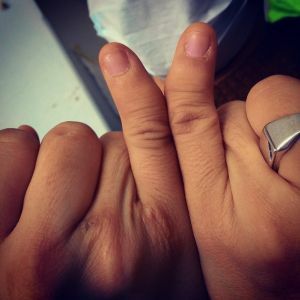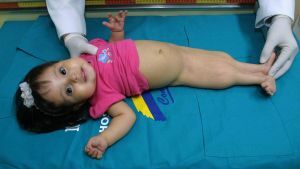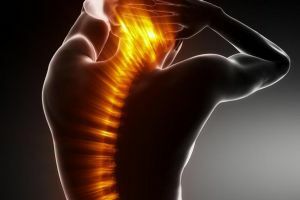 The pathogenic process, in which dense formations appear in bone tissues, is called sclerosis of the spine. Such compaction, which is a signal of a violation of blood circulation in tissues, is characteristic of vertebrae.
The pathogenic process, in which dense formations appear in bone tissues, is called sclerosis of the spine. Such compaction, which is a signal of a violation of blood circulation in tissues, is characteristic of vertebrae.
Sclerosis can not be called an independent disease. This is only a harbinger of arthrosis and osteochondrosis of the spine. It is usually diagnosed with X-ray examination as a concomitant sign of another disease.
Cartilaginous tissue, which is covered with the inner part of the joints, allows them to move freely. If the cartilage is damaged, then the growth and consolidation of bone tissue occurs.
There are bone growths - osteophytes, which almost do not disrupt the functioning of the joint, if located with the edge.
In the case of germination of osteophytes between the joint surfaces, there is a narrowing of the joint gap, which leads to a restriction of its mobility and painful sensations, stiffness in the spine.
Contents of the article
- The reasons and risk factors
- The causes and risk factors
- Classification by the degree of localization
- How the violation is manifested
- Diagnostic methods
- Therapy methods
- Complications of the disease
- Preventative measures
Causes and risk factors
More people of senile age are subject to development of subchondral sclerosis of the spine,them and the face of a younger age.
There are 2 large groups of causes of such a sclerosis: internal and external.
The first( endogenous) are caused by the processes occurring in the body and are determined by the following risk factors:
- The age of the patient's and the associated weakening of muscle tissues. There is a risk of getting the disease after 50 years. Genetic predisposition of a person .Especially it concerns women who have a mother with joint diseases( arthrosis, osteochondrosis, collagenoses).
- The presence of inflammation in the joint( systemic lupus erythematosus).
- Endocrine diseases ( diabetes mellitus), worsening the blood supply of the legs.
The causes of the disease due to external factors( exogenous) include: 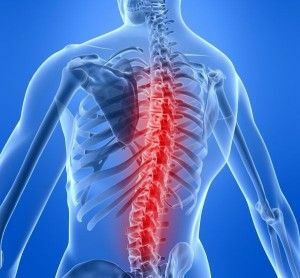
- spine joint injuries are fresh and acquired earlier;
- microtrauma, received by people who are constantly loaded with one group of joints( athletes, miners, dancers);
- internal fractures of the joints, disturbing their nutrition, which triggers pathological processes;
- is overweight, acting negatively on the joints;
- congenital articular anomalies, diseases of the musculoskeletal system;
- is a sedentary lifestyle.
- weak back muscles;
- is a professional activity where it is necessary to stay in one position for a long time.
Classification by degree of localization
The disease is classified according to the place in which the compaction occurred.
Subchondral sclerosis occurs:
- of the cervical spine, which is accompanied by severe pain with localization in the area of the arms and neck;
- of the thoracic region, which is characterized by painful sensations in combination with completely disrupted functions of the spine, leading to its complete ossification and immobilization;
- of the spinal closure plates;
- pathology indicating significant damage to the vertebral column.
Pathological subchondral, i.e. subchondral sclerosis of the spine causes pain along the pinched nerve. The process affects the closure plates located in the region of the disc and the body of the vertebra.
How the violation of
is manifestedSince sclerosis of the spine is not an independent disease with its characteristic features only, the clinical picture is determined depending on which symptom of which disease it is caused.
There are several stages of sclerosis of the spine, depending on the main symptoms:
- The initial stage of .There are marginal osseous joints, intercrossing without changes. The mobility of the joint is slightly limited in the patient.
- The middle stage of .The growth of the bone is more pronounced, and the articular fissure is narrowed. A person can not fully work and experiences difficulties in everyday life.
- The final stage of the .The joint is completely deformed by a significant proliferation of bone tissue, the articulation gap narrowing even more, and its surface becomes flat. There is a complete loss of joint function.
Common signs of this disease are the following:
- the emergence of osteophytes( seals in the bone), with their localization along the vertebrae, speaks of the development of osteochondrosis, and at the edges of the joint - arthrosis;
- presence of pain syndrome;
- violations in the coordination of movements;
- problems of mobility of the back and neck;
- weakness in the muscles;
- feelings of numbness, tingling, weakness of the limbs;
- shortness of breath, impaired memory, attention and hearing;
- depressive manifestations;
- weight loss for unknown reasons.
All these signs of sclerosis do not manifest simultaneously. There may be only a few of them depending on the progression of the disease. There is also an asymptomatic course of the disease in some people.
Diagnostic methods
Diagnosis of the disease can sometimes be made only through a hardware survey, as it can not always be seen externally.
For testing methods are used:
- magnetic resonance imaging;
- computed tomography;
- densitometry( test for the condition and size of compaction of bone tissue);
- is a genetic test for determining hereditary diseases.
In addition, the patient is examined blood to exclude probable diseases.
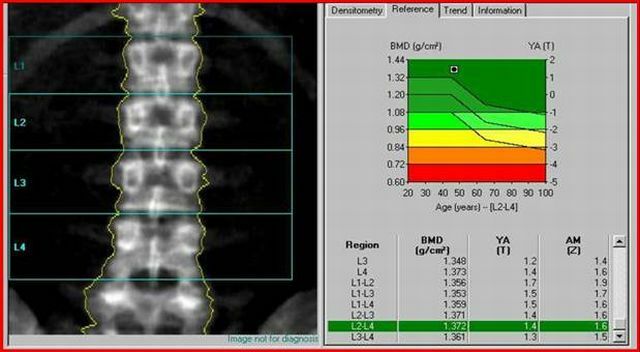
Densitometry of the spine
Methods of therapy
As such, subchondral sclerosis is not considered a disease. This concept, which denotes pathological processes in bone tissue.
There is no cure for this sclerosis. It is necessary to be engaged, first of all, by diagnosing the underlying disease that accompanies the sclerosis of the spine, and the treatment is precisely it.
Effective treatment is possible only in the early stages of the disease, but a person rarely calls on doctors on time. If the patient came to the reception at the first symptoms of sclerosis of the spine, the goal of complex therapy is to reduce the progress of the underlying disease.
Methods that can alleviate a patient's condition are:
- Medication treatment .Pain is removed with non-steroidal anti-inflammatory drugs. The state of intervertebral joints is improved by the use of drugs containing chondratin, glucosamine. The general state of the body is maintained at a normal level by immunomodulators.
- Physiotherapeutic procedures .They allow to stop pain and to adjust joint blood circulation.
- Therapeutic gymnastics .Physical exercises, swimming, yoga and pilates help to increase the mobility of the joints, strengthen the muscles. These exercises form a muscular corset, which holds the spine in the right position.
- Manual therapy and massage .They are only allowed for the doctor's prescription, after the pain syndrome
 is reduced by other methods.
is reduced by other methods. - Balanced nutrition, combined with a special diet .The patient is prescribed a diet that includes fresh fruits, vegetables, containing vitamins, microelements and seafood, rich in fatty acids.
- Surgical treatment of .At belated address to the doctors, when the growths have already appeared, the patient can not do without surgical intervention, in which the osteophyte foci are removed.
But getting rid of the sclerosis of the spine is not possible. The complex of measures, including all the methods of treatment, allows to restore the mobility of the joints and eventually return the person to a normal lifestyle, without pain.
Complications of the disease
If you do not treat the disease( osteochondrosis, arthritis, arthrosis), which manifestation is subchondral sclerosis, then the spine will accelerate aging.
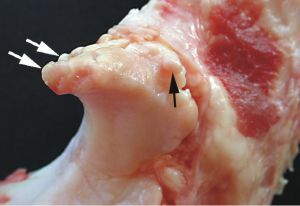
Osteophyte formation
Hernia will appear as a result of loss of intervertebral disc properties of depreciation, which will press on the nerve roots, causing severe pain.
And the inflammation, inevitable with a hernia, will lead to a tightening of the bone tissue, forming osteophytes. And further it is possible full immobility of a department of a backbone.
The intervertebral joints, which react similarly to the vertebrae, also become inflamed - the bone tissue becomes denser, causing the development of osteophytes.
There is an erasure of the cartilaginous tissue, in its place there are bony growths, which causes the joint movement to cause severe pain to the person. '
Preventative measures
To avoid all complications of sclerosis of the spine, one should know the reasons for its development. 
Prevention of the disease involves the maintenance of joints in the warmth and moderate exercise, keeping the joints mobile, and their blood supply is normal.
Rational nutrition and principles of a healthy lifestyle should become the rule for people with spine problems.
If you have any signs of joint disease, you should see a doctor who will put the correct diagnosis and prescribe a treatment that can stop the progression of sclerosis of the spine.

